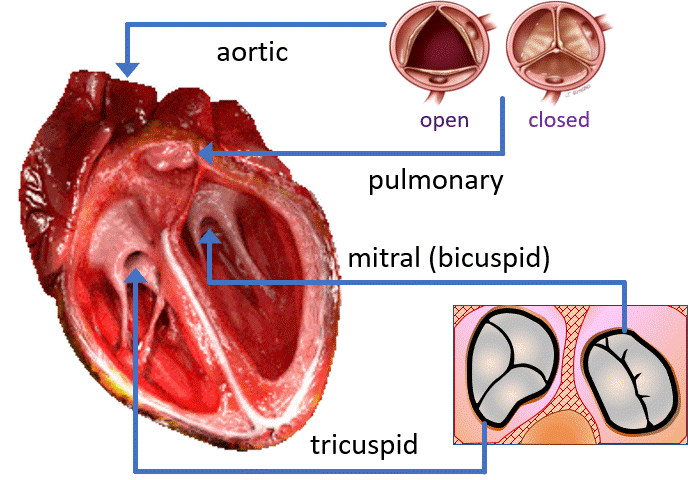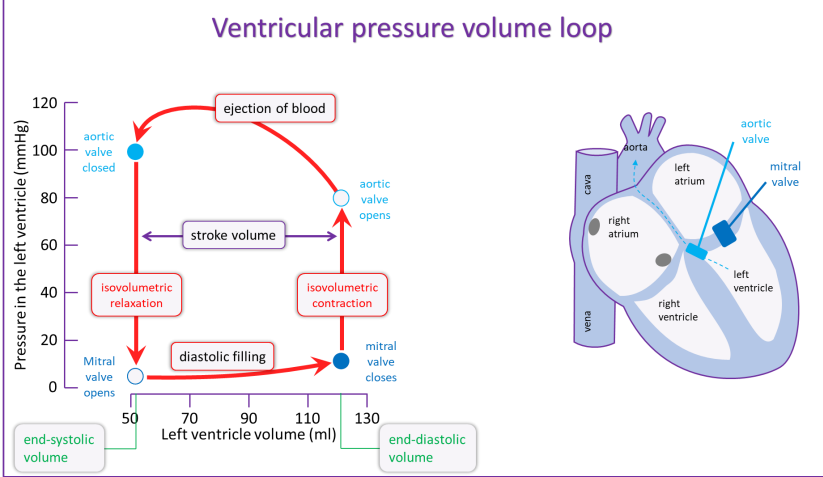Note
0.0(0)
Explore Top Notes Note
Note Studied by 26 people
Studied by 26 people Note
Note Studied by 10 people
Studied by 10 people Note
Note Studied by 8 people
Studied by 8 people Note
Note Studied by 28 people
Studied by 28 people Note
Note Studied by 141 people
Studied by 141 people Note
Note Studied by 21 people
Studied by 21 people
Spectroscopy
5.0(1)
Chapter 35: Cardiac Poisons
5.0(1)
Developmental psychology
4.0(1)
Timeline National Jan-June 2022
5.0(3)
Study Guide BFI - History Theme 1 : 1930-1945
5.0(1)
Chapter 31: Money and Banking
5.0(1)
Cardiac output and the cardiac cycle
Control of cardiac output:
- Cardiac output is the flow of blood from the heart into the circulation. It is the volume of blood pumped from the left ventricle per beat multiplied by beats per minute and is defined by the following equation: CO = SV X HR (cardiac output= stroke volume x heart rate)
- Cardiac output is determined by: heart size, ventricular contractility, duration of ventricular contraction, preload, afterload
- Stroke volume is the volume of blood pumped from the left ventricle during each systolic contraction
- Preload: is how stretch the ventricles are before contracting
- Afterload: is the pressure against which the blood has to pump
- Venous flow is the flow of blood back to the heart
Heart valves and ventricular pressure loop:
- The cardiac valves keep blood flowing through the heart in one direction. A valve is located at the inlet and outlet of each ventricle to control blood entry and exit. Watch the animation to see how the opeining and closing of different valves co-ordinates with ventricular contraction.


- The mitral valve, which controls blood flow from the left atrium and the aortic valve which controls blood flow out of the ventricle into the aorta.
- The tricuspid and pulmonary valves play equivalent roles in regulating blood flow through the right ventricle.
- at the end of systole when the mitral valve is closed the volume of blood is at its lowest- That is the end-systolic volume. (Pressure in the left ventricle is also at its lowest level).
- When the mitral valve opens, blood can enter the ventricle from the atrium, increasing the ventricular volume. This is known as diastolic filling.
- As the ventricle fills, the pressure begins to rise, closing the mitral valve. This signals the end of diastole, so the volume in the ventricle at this point is the end diastolic volume.
- As systole begins the ventricle contracts, which causes a rise in the ventricular pressure. There is no change in volume because both the mitral and aortic valves are closed, preventing blood escaping to the aorta or to the atrium. This is known as isovolumetric contraction.
- As the pressure builds to about 80 mmHg, the aortic valve opens, allowing blood to be pumped out into the aorta. The volume of blood in the ventricle therefore drops, but the pressure continues to rise as the ventricle contraction continues to rise to its maximum force.
- The continuing fall in blood volume eventually leads to a drop in pressure sufficient to close the aortic valve.
- The ventricles are now relaxing, causing the pressure in the ventricle to fall, without a change in volume. This is known as isovolumetric relaxation.
- The difference between the volumes during isometric relaxation and isometric contraction is the stroke volume.
- This relationship between the pressure and blood volume in the left ventricle is known as the ventricular pressure volume loop
Note
0.0(0)
Explore Top Notes Note
Note Studied by 26 people
Studied by 26 people Note
Note Studied by 10 people
Studied by 10 people Note
Note Studied by 8 people
Studied by 8 people Note
Note Studied by 28 people
Studied by 28 people Note
Note Studied by 141 people
Studied by 141 people Note
Note Studied by 21 people
Studied by 21 people
Spectroscopy
5.0(1)
Chapter 35: Cardiac Poisons
5.0(1)
Developmental psychology
4.0(1)
Timeline National Jan-June 2022
5.0(3)
Study Guide BFI - History Theme 1 : 1930-1945
5.0(1)
Chapter 31: Money and Banking
5.0(1)